Seven Scientists Receive EMSL Project Awards for Soil Sampling Studies
Their research will contribute data to the Molecular Observation Network
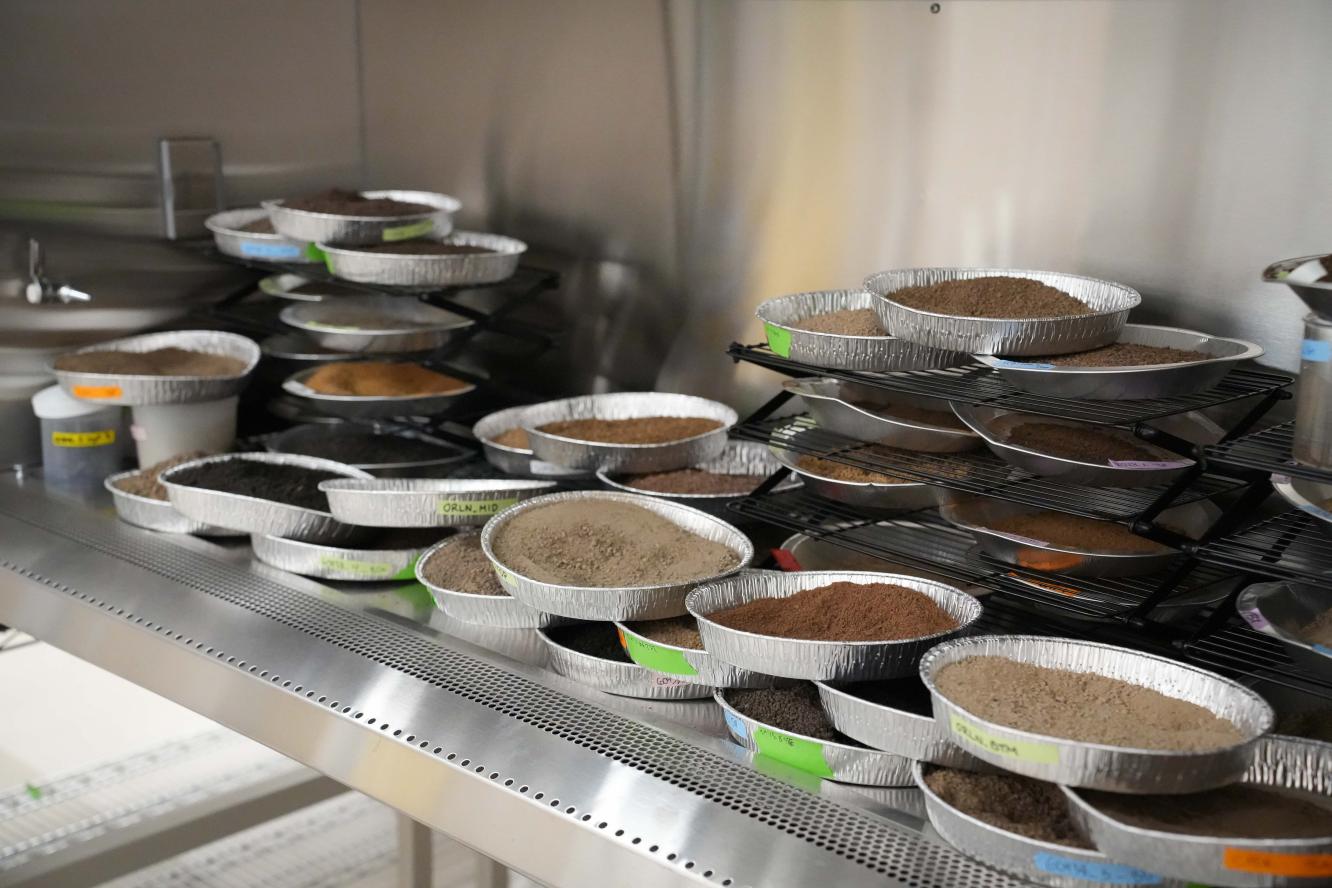
Seven scientists have been selected to participate in the spring sampling season for the Molecular Observation Network (MONet). (Photo by Genoa Blankenship | Environmental Molecular Sciences Laboratory)
The Environmental Molecular Sciences Laboratory (EMSL) has selected projects from seven scientists to participate in the spring sampling season for the Molecular Observation Network (MONet).
The projects represent a total of 45 soil core samples that will be collected in April and May 2024 and then analyzed at EMSL to contribute data to the MONet database. This publicly available database is designed to advance regional-scale and Earth system process models that cover ecosystems across the United States.
EMSL, a Department of Energy, Office of Science user facility at Pacific Northwest National Laboratory, developed MONet in 2023 to transform the understanding of soil processes and provide news tools for adapting to and counteracting climate change.
Researchers can submit MONet project proposals on a quarterly basis but are limited to one sampling project per year. MONet’s Fall 2024 quarterly call for soil core samples will be open June 3 – July 2.
The spring awardees are largely early and mid-career researchers who will be collecting soil samples from a variety of ecoregions across the continental United States. The awarded projects are from urban, cropland, and peatland soils with an emphasis on soil health and nutrition, microbial communities, and greenhouse gas cycling.
Armando Bravo 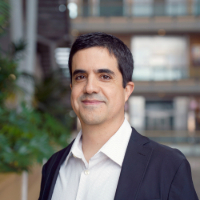
Donald Danforth Plant Science Center
Ecoregion: Prairie Peninsula and Ozarks Complex
Land Use: Urban, developed, cropland, and grass/shrub
Location: St. Louis, St. Charles, Polk County, Missouri
Prairies—an ecosystem known for fertile soils—contain 35 percent of the soil organic carbon in the continental United States. However, the use of fertilizer and tillage in traditional farming disrupts underground microbial interactions, particularly with bacteria and mycorrhizal fungi. These farming practices have changed microbial communities, but soils remain a rich source of microbes.
There is limited scientific knowledge about the differences between cultivated and undisturbed soils in natural prairie soils. Armando Bravo, an assistant member of the Donald Danforth Plant Science Center, and his research team will compare soil types in prairies to understand the relationships between soil properties, land use, and diverse microbial communities. Their research aims to deepen our comprehension of ecosystem processes, with the ultimate goal of enhancing plant nutrition through sustainable agricultural practices and highlighting the importance of preserving original environments.
Shawn Brown 
University of Memphis
Ecoregion: Ozarks Complex
Land Use: Cropland
Location: Memphis, Tennessee
Cover crops—plants that cover agricultural soil and aren’t meant to be harvested—have been shown to increase organic carbon stocks in soils. But there are unknowns about how cover crops contribute to these carbon stock increases. Shawn Brown, an associate professor at the University of Memphis, plans to sample soil from an urban farm in Memphis, Tennessee, to test the soil microbiome and soil health effects across a soil moisture gradient with different cover cropping combinations. This research aims to expand understanding of soil ecosystem processes associated with cover crop utilization in the Mid-South region where there have been few studies on soil processes in agriculturally relevant systems.
Matthew Fischel 
United States Department of Agriculture - Agricultural Research Service, Sustainable Agricultural Systems Laboratory
Ecoregion: Mid-Atlantic
Land Use: Cropland and tree cover
Location: Beltsville, Maryland
More than half of land in the United States is agricultural. With an increasing emphasis on the benefits of carbon storage and soil health, the methods for achieving these emerging goals have yet to be fully understood. Matthew Fischel, a research chemist at the United States Department of Agriculture - Agricultural Research Service in the Sustainable Agricultural Systems Laboratory, seeks to gain deeper insight into how agricultural management alters the composition of organic matter, the pore network structure, geochemistry, and the microbial diversity and function.
Fischel will collect samples at the Beltsville Agricultural Research Center’s Farming Systems Project (FSP) site to measure the difference in soil carbon and nitrogen associated with specific mineral pools in each treatment through selective extractions. FSP was created to quantify the differences between yield and nutrient management and the resulting soil health in organic and conventional farming systems.
Markus Flury 
Washington State University Puyallup Research & Extension Center
Ecoregion: Pacific Northwest
Land Use: Cropland
Location: Mansfield, Washington
Are biosolids a sustainable alternative to commercial fertilizers for agricultural production?
This is the research question that Markus Flury wants to answer with his MONet research. Flury, a professor at the Washington State University Puyallup Research & Extension Center, will be studying how long-term applications of biosolids affect soil organic carbon, soil structure, and soil hydraulic and microbiological characteristics. He and his research team will investigate the transfer of microplastics from biosolids to soils and how microplastics affect overall soil health.
Flury will collect samples from five experimental treatment dryland soil locations in a site where biosolids from Seattle have been applied for the past 23 years.
Jessica Czarnecki 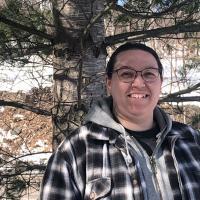
Michigan Technological University
Ecoregion: Great Lakes
Land Use: Wetlands
Location: Meadowlands, Minnesota
Peatlands are carbon sinks that store approximately one third of global soil carbon. This carbon is vulnerable to oxidation due to climate change and anthropogenic manipulation, such as drainage. While the assumption is that decomposition increases in drier, more oxic conditions, there is uncertainty around the roles of biological and biogeochemical feedbacks in the decomposition of northern peatland ecosystems.
Jessica Czarnecki, a PhD candidate at Michigan Technological University, will be studying a transect between a drained and unaltered peatland in northern Minnesota to understand these dynamics. The research site is an acidic, nutrient poor, Sphagnum-dominated peatland that was ditched for drainage in the 1910s for agricultural purposes. Up-slope from the tree-dominated, forested peatland is an open “pristine” peatland dominated by sedge and ericaceous shrub. In prior studies conducted along the transect at this site, a shift in the mycorrhizal fungi was observed. Ericoid mycorrhizal fungi were found in the “pristine” peatland, while ectomycorrhizal fungi were found at the drain site where tree encroachment had occurred. High-resolution data of the molecular composition of soil organic matter will be used in tandem with metagenomic data and enzymatic activity to understand how peatland carbon storage has been affected by long-term changes to hydrology. Geochemistry and soil organic matter compositional data will give insight into understanding how these changes will alter nutrient cycling in peatlands.
Courtney Scott 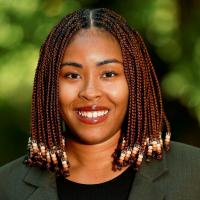
University of Georgia
Ecoregion: Southeast
Land Use: Urban, developed
Location: Athens, Georgia
The University of Georgia (UGA) campus houses a diverse community of tree species that benefit the campus community by mitigating air pollution, sequestering carbon, reducing energy costs, and providing aesthetic, mental, and emotional benefits. Urban trees experience stressors from compaction, limited soil area, light interference, and elevated temperatures. UGA graduate student Courtney Scott will collect samples from 10 different tree species to investigate the impact of urban disturbance and mycorrhizal association on soil organic matter quality and nutrient cycling using an urban disturbance gradient. This research will assist in making predictions on soil carbon stocks and quality in urban soils, whose role in the global carbon cycle is challenging to study because of the high heterogeneity and difficulty in sampling urban environments. The findings from this study will provide valuable insight to urban foresters, land managers, and scientists by quantifying the relative importance of compaction and soil area on overall tree condition and soil biogeochemical processes.
Gary Stinchcomb 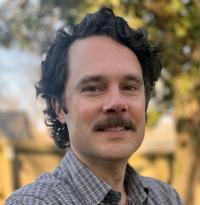
University of Memphis
Ecoregion: Ozarks Complex
Land Use: Wetlands
Location: Benton, Kentucky
Plant roots, and the immediately surrounding soil (rhizosphere), are involved in the production of greenhouse gases (carbon dioxide and methane) and the sequestration of carbon. Understanding how environmental factors drive this plant–gas connection in the field and lab will improve our ability to model climate into the future.
Gary Stinchcomb, an assistant professor at the University of Memphis, is examining how aboveground and belowground roots influence greenhouse gas cycling in mineral soil bottomland forests in response to climate change and hydrologic variability. Using a synergistic Modeling–Experimentation (Mod-Ex) approach, Stinchcomb and the research team will collect samples from sites that vary in landscape along floodplain back channels that are occupied by bald cypress.
This work will improve the understanding of ecosystem services through the modeling of methane dynamics across bottomland forest watersheds using information gained during field and lab measurements and mesocosm experiments.

